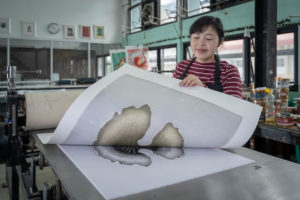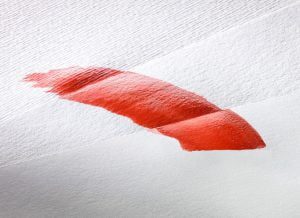Fine art papers are a crucial component in the creation of stunning and long-lasting art pieces. They are not just a medium, but a partner to the artist, carrying the weight of the colors and contributing to the overall aesthetic of the artwork.
The Importance of Fine Art Papers
The choice of paper can significantly impact the final outcome of an artwork. Fine art papers are designed to enhance the visual appeal of the art, providing depth, texture, and a certain level of sophistication that regular papers cannot offer.
Types of Fine Art Papers
There are several types of fine art papers, each with its unique characteristics and benefits.
Cotton Rag
Cotton rag papers are made from cotton linters or rags, making them durable and capable of withstanding multiple erasures and reworking without tearing.
Alpha-Cellulose
Alpha-cellulose papers are made from wood pulp that has been treated to remove impurities. They offer a balance between quality and affordability.
Baryta
Baryta papers have a barium sulfate coating that provides a smooth, glossy finish. They are ideal for black-and-white photography due to their high contrast and rich tonal range.
Factors to Consider When Choosing Fine Art Papers
Choosing the right fine art paper involves considering several factors.
Weight and Thickness
The weight and thickness of the paper can affect its durability and how it handles different mediums. Heavier papers are more durable and can handle heavier applications of medium without warping.
Texture
The texture of the paper can influence the appearance of the artwork. Some artists prefer a smooth surface for detailed work, while others prefer a rough texture for a more tactile feel.
Color and Brightness
The color and brightness of the paper can affect the vibrancy of the colors in the artwork. Brighter papers can make colors pop, while toned papers can provide a unique mood or atmosphere.
How to Store and Handle Fine Art Papers
Proper storage and handling of fine art papers are crucial to preserve their quality. They should be stored flat in a cool, dry place and handled with clean hands to prevent oils and dirt from damaging the paper.
The Role of Fine Art Papers in Digital Printing
Fine art papers play a significant role in digital printing, affecting the quality and longevity of the print.
Inkjet Printing on Fine Art Papers
Inkjet printing on fine art papers can produce high-quality prints with excellent color accuracy and detail. The type of paper used can affect the final outcome of the print.
Check out this giclee print on Hahnemuhle FineArt Baryta paper and Print on Canson Arches 88 Matte paper.
Laser Printing on Fine Art Papers
Laser printing, on the other hand, is a heat-based process that fuses toner onto the paper. While it may not offer the same level of detail as inkjet printing, it is faster and more cost-effective, making it a popular choice for large print runs.
Notable Brands of Fine Art Papers
There are several brands known for their high-quality fine art papers. These include Epson, Hahnemühle, Canson, and Moab, each offering a range of papers to suit different artistic needs and preferences.
Choosing the right fine art paper is a crucial step in the artistic process. Whether you’re a traditional artist or a digital printmaker, understanding the different types of fine art papers and their characteristics can help you make an informed decision that will enhance your artwork and ensure its longevity.
Fine Art Paper Finishes
Matte Finish
Matte fine art papers have a non-reflective surface, which is ideal for artworks that require a soft and smooth appearance. This type of finish is excellent for fine detail and is often used for black-and-white photography and color prints.
Glossy Finish
Glossy fine art papers have a shiny surface that can make colors appear more vibrant. This finish is often used for photographs and prints that require high contrast and sharpness. However, they can be prone to fingerprints and glare.
Semi-Gloss or Satin Finish
Semi-gloss or satin fine art papers offer a balance between matte and glossy finishes. They provide a slight sheen that can enhance color vibrancy and contrast but with less glare than glossy papers.
The Environmental Impact of Fine Art Papers
Sustainable Sourcing
Many fine art paper manufacturers are committed to sustainable sourcing practices. This includes using responsibly sourced wood pulp and ensuring that the production process does not harm local ecosystems.
Recycled Materials
Some fine art papers are made from recycled materials, reducing waste and the demand for new raw materials. However, it’s important to note that the quality and characteristics of these papers may differ from those made from virgin materials.
Acid-Free and Archival Quality
Acid-free and archival-quality fine art papers are designed to last for a long time without yellowing or deteriorating. This not only preserves the quality of your artwork but also reduces the need for replacement, contributing to sustainability.
The Future of Fine Art Papers
Digital Innovations
Digital technologies are opening up new possibilities for fine art papers. For example, some manufacturers are developing papers specifically designed for digital art, offering enhanced compatibility with digital tools and mediums.
Eco-Friendly Innovations
In response to growing environmental concerns, many manufacturers are exploring more sustainable production methods and materials. This includes developing fine art papers made from alternative, eco-friendly materials such as bamboo or hemp.
Fine art papers are more than just a canvas for your creativity. They play a crucial role in the artistic process, influencing the appearance, feel, and longevity of your artwork. By understanding the different types of fine art papers and their characteristics, you can make informed decisions that enhance your art and align with your values.
Understanding the Role of Fine Art Papers in Art Reproductions
Giclée Printing
Giclée printing is a popular method for reproducing fine art. It involves spraying microscopic dots of pigment-based ink onto high-quality fine art paper. The result is a reproduction with vibrant colors and fine details that closely resemble the original artwork. At Vivia Print, we provide giclée prints on a variety of fine art papers including:
- Canson Arches 88 Matte
- Canson Arches Aquarelle Rag
- Canson Arches BFK Rives Pure White
- Canson Rag Photographique
- Canson Platine Fibre Rag
- Moab Metallic Pearl Paper
- Moab Entrada Rag Natural 300
- Moab Entrada Rag Paper
- Hahnemuhle Photo Rag Metallic Paper
- Hahnemuhle Photo Matte Fibre Paper
- Hahnemuhle Photo Rag 308
- Hahnemuhle Photo Rag Satin Paper
- Hahnemuhle FineArt Baryta
- Hahnemuhle Museum Etching Paper
- Epson Cold Press Paper
- Epson Matte Canvas
- Epson Somerset Velvet Paper
- Epson Hot Press Paper
Lithography
Lithography is another common method of art reproduction. It involves creating an image on a plate, which is then inked and pressed onto fine art paper. While this method can produce high-quality reproductions, the choice of paper is crucial to ensure the best results.
The Impact of Fine Art Papers on Art Appreciation
Fine art papers do more than just hold the artwork; they can also influence how the artwork is perceived and appreciated.
Enhancing the Artwork’s Aesthetic
The texture, weight, and finish of the fine art paper can enhance the artwork’s aesthetic, adding depth and dimension that can elevate the viewer’s experience.
Preserving the Artwork’s Integrity
High-quality fine art papers can preserve the artwork’s integrity over time. Acid-free and archival-quality papers resist yellowing and deterioration, ensuring that the artwork can be enjoyed for generations to come.
Fine art papers are an essential tool for artists, playing a significant role in the creation, reproduction, and appreciation of art. By understanding the different types of fine art papers and their characteristics, artists can make informed decisions that will enhance their work and ensure its longevity.
The Intersection of Fine Art Papers and Photography
Photography is another area where fine art papers have a significant impact. The choice of paper can influence the final appearance of a photograph, affecting its color, contrast, and overall mood.
Photographic Fine Art Papers
Photographic fine art papers are designed to bring out the best in your photographs. They come in a variety of finishes, from glossy to matte, each offering a different aesthetic. High-quality photographic papers can reproduce a wide color gamut, ensuring accurate and vibrant colors.
Black and White Photography
For black and white photography, the choice of fine art paper is even more critical. Certain papers, like baryta, are known for their ability to produce deep blacks and a wide range of grays, enhancing the contrast and depth of black-and-white images.
Delving into the Hahnemühle FineArt Inkjet Papers
Hahnemühle is a renowned brand in the world of fine art papers, offering a comprehensive assortment of high-quality, unique FineArt inkjet papers. These papers are designed for customers who are looking for something special and want to get the best out of their images.
The Hahnemühle Difference
What sets Hahnemühle FineArt Inkjet papers apart is their impressive reproduction of color and detail, incredible contrasts, and deep blacks. These papers are perfect for long-term exhibitions, art collections, and special editions. They are made from high-quality and ultra-pure artist papers, with specially manufactured natural wool felts giving the papers their unique surface texture. This texture provides a three-dimensionality that enhances the image effect thanks to incredible depth.
The Sustainability Factor
Hahnemühle FineArt Inkjet papers are not just about quality; they are also about sustainability. All Hahnemühle papers have been certified by independent institutes to be highly resistant to aging and are vegan, meeting the highest requirements of customers.
Whether you’re an artist, a photographer, or an art student, fine art papers are an invaluable tool in your creative process. They not only affect the appearance of your artwork but also contribute to its longevity and the way it is perceived by others. By understanding the various types of fine art papers and their characteristics, you can make informed decisions that will enhance your creative work.
The Versatility of Fine Art Papers
When we think of fine art papers, we may envision gallery walls adorned with printed photographs or exquisite drawings and paintings. However, did you know that fine art papers are not limited to traditional or digital art and photography? They are also used in other creative fields, demonstrating their versatility.
Fine Art Papers in Graphic Design
In graphic design, the choice of paper can significantly influence the final product. Fine art papers can add a touch of sophistication to printed designs, enhancing colors, and providing a unique tactile experience. With their range of textures and finishes, they can elevate everything from business cards to brochures, invitations, and packaging.
Fine Art Papers in Book Arts
In book arts, fine art papers are often used for creating limited edition books, artist’s books, and handmade journals. The quality and aesthetic appeal of these papers contribute to the overall value and uniqueness of these creations. Whether used for covers, endpapers, or interior pages, fine art papers can enhance the reading experience and make a book feel like a true work of art.
Caring for Your Fine Art Papers
Proper care and handling of fine art papers are crucial to maintaining their quality and longevity. Here are some tips:
Handling Fine Art Papers
Always handle fine art papers with clean, dry hands. Oils and dirt from your hands can damage the paper surface. If possible, use cotton gloves when handling fine art papers.
Storing Fine Art Papers
Store fine art papers in a cool, dry place, away from direct sunlight. If storing for a long time, consider using acid-free storage boxes or sleeves to protect the papers from dust and environmental damage.
Fine art papers are a valuable tool in the creative process, offering a unique combination of aesthetic appeal, quality, and versatility. Whether you’re an artist, a photographer, a graphic designer, or a book artist, understanding the characteristics and proper care of fine art papers can help you enhance your work and ensure its longevity.
Fine Art Papers: The Evolution and Future of this Essential Medium
From Traditional to Digital
Traditionally, fine art papers were used primarily for drawing and painting. However, with the advent of digital technology, they have found a new role in digital printing and photography, offering a tangible medium for digital artwork.
Innovations in Fine Art Paper Manufacturing
Innovations in manufacturing processes have also led to the development of new types of fine art papers. For example, some manufacturers are now producing eco-friendly papers made from alternative materials like bamboo or hemp.
The Future of Fine Art Papers
As we look to the future, the evolution of fine art papers is set to continue.
Digital and Eco-Friendly Innovations
Digital and eco-friendly innovations are expected to shape the future of fine art papers. This includes the development of papers specifically designed for digital art and those made from more sustainable materials.
Customization and Personalization
The trend toward customization and personalization is also likely to influence the fine art paper industry. This could involve the production of papers with custom textures, finishes, or colors to suit the specific needs of artists.
The Future of Fine Art Papers
Fine art papers have come a long way from their traditional roots, adapting and evolving to meet the changing needs of artists and the art industry. As we move forward, it’s exciting to imagine what the future holds for this essential artistic tool.
Fine art papers have evolved from being used primarily for drawing and painting to playing a crucial role in digital printing and photography. Innovations in manufacturing processes have also led to the development of new types of fine art papers, including eco-friendly options.
FAQs
What is the best fine art paper for inkjet printers?
The best paper largely depends on the desired finish and texture. However, cotton rag papers are often recommended for their durability and color accuracy.
Can I use fine art paper in a regular printer?
Yes, but it’s important to check the printer’s specifications to ensure it can handle the weight and thickness of the paper.
What’s the difference between cotton rag and alpha-cellulose papers?
Cotton rag papers are made from cotton and are highly durable, while alpha-cellulose papers are made from wood pulp and offer a balance between quality and affordability.
What does ‘archival quality’ mean in fine art papers?
‘Archival quality’ in fine art papers means that the paper is acid-free and designed to last for a long time without yellowing or deteriorating. This helps preserve the quality of your artwork.
How do I store fine art papers?
Fine art papers should be stored flat in a cool, dry place. They should also be handled with clean hands to prevent oils and dirt from damaging the paper.
How should I handle fine art papers?
Always handle fine art papers with clean, dry hands to prevent damage. If possible, use cotton gloves when handling these papers.
Why are fine art papers important in digital printing?
Fine art papers can greatly enhance the quality of digital prints, providing excellent color accuracy, detail, and longevity.
What is Giclée printing?
Giclée printing is a method for reproducing fine art that involves spraying microscopic dots of pigment-based ink onto high-quality fine art paper. The result is a reproduction with vibrant colors and fine details.
What is the difference between matte, glossy, and semi-gloss finishes?
Matte finish has a non-reflective surface ideal for a soft appearance, the glossy finish has a shiny surface that enhances color vibrancy, and semi-gloss or satin finish offers a balance between the two.
Can the finish of a fine art paper affect my artwork?
Yes, the finish of a fine art paper can affect the appearance and feel of your artwork. For example, a matte finish can give a soft and smooth look, while a glossy finish can enhance color vibrancy and contrast.
How do fine art papers affect photographs?
Fine art papers can greatly influence the final appearance of a photograph. They can affect its color, contrast, and overall mood. High-quality photographic papers can reproduce a wide color gamut, ensuring accurate and vibrant colors.
Why is the choice of paper important in black-and-white photography?
The choice of paper is crucial in black-and-white photography because certain papers can enhance the contrast and depth of black-and-white images. For example, baryta papers are known for their ability to produce deep blacks and a wide range of grays.
Can I use fine art paper for my photographs?
Yes, there are fine art papers specifically designed for photography. They come in a variety of finishes and can reproduce a wide color gamut for accurate and vibrant colors.
What role do fine art papers play in art education?
In art education, fine art papers allow students to experiment with different art techniques and mediums. They also help students develop their artistic skills, such as brush control and understanding of textures.
How can working with fine art papers improve my artistic skills?
Working with fine art papers can improve your artistic skills by allowing you to understand how different papers react with various mediums. It can also improve your control over the application of the medium, especially on textured papers.
Can I use fine art papers in graphic design?
Yes, fine art papers can add a touch of sophistication to printed designs, enhancing colors, and providing a unique tactile experience.
Can fine art papers be used in book art?
Yes, fine art papers are often used in book art for creating limited edition books, artist’s books, and handmade journals.
Are there eco-friendly fine art papers?
Yes, many manufacturers offer fine art papers made from recycled materials or sustainably sourced wood pulp. Some are also exploring alternative materials like bamboo or hemp.
Can I get fine art papers with custom textures or colors?
While most fine art papers come in standard textures and colors, some manufacturers may offer customization options. It’s best to check with the manufacturer or supplier for specific options.
What are some future trends in fine art papers?
Digital and eco-friendly innovations are shaping the future of fine art papers. This includes papers designed for digital art and those made from more sustainable materials.
What might the future hold for fine art papers?
The future of fine art papers is likely to be shaped by digital and eco-friendly innovations, as well as a trend toward customization and personalization.
How can fine art papers enhance digital artworks?
Fine art papers offer a tangible medium for digital artworks, enhancing their visual appeal and providing a unique tactile experience. High-quality fine art papers can accurately reproduce the colors and details of digital artworks, making them ideal for digital printing.
Can I use any type of paper for art reproductions?
While it’s technically possible to use any type of paper for art reproductions, fine art papers are recommended for their superior quality and ability to reproduce colors and details accurately.
How does lithography work?
Lithography involves creating an image on a plate, which is then inked and pressed onto fine art paper. The choice of paper is crucial to ensure high-quality reproductions.
What is the role of fine art papers in art reproductions?
Fine art papers ensure that art reproductions are of high quality and closely match the original piece. They can accurately reproduce colors and details, contributing to the overall aesthetic of the reproduction.
How should I store fine art papers?
Store fine art papers in a cool, dry place, away from direct sunlight. For long-term storage, consider using acid-free storage boxes or sleeves.
What are some ways to care for my fine art papers?
Proper handling and storage are crucial for maintaining the quality of your fine art papers. Always handle them with clean, dry hands and store them in a cool, dry place, away from direct sunlight.
How can fine art papers enhance art appreciation?
Fine art papers can enhance art appreciation by adding depth and dimension to the artwork and preserving its integrity over time.




